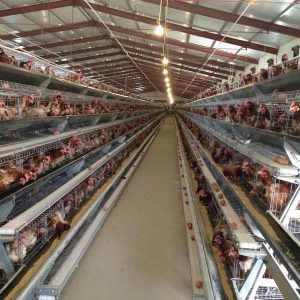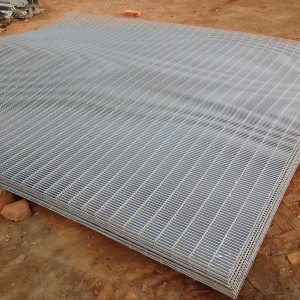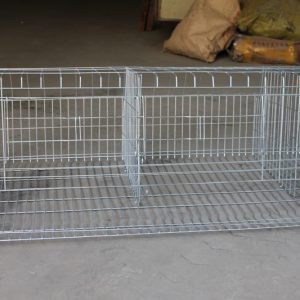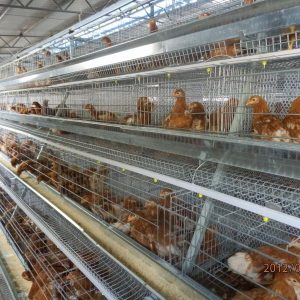
How to cool down in high temperature environment?
Many farmers often neglect the effective prevention and control of avian influenza in poultry in high temperature seasons. In addition to the recent changes in poultry farming methods and the frequent mutation of avian influenza viruses, as well as the decline in resistance of poultry caused by high temperature and high humidity stress What are the measures to prevent and control bird flu? How to prevent heatstroke and cool down in high temperature environment?
The measures for preventing and controlling poultry and bird flu in high-temperature seasons are as follows:
1. Strengthen poultry house management, properly reduce the feeding density, maintain good ventilation, do a good job in cooling the wet curtain and spray cooling, remove feces in the house in time, and maintain a good house environment. Closed farms should also prepare standby generators to prevent large numbers of poultry deaths caused by sudden power outages.
2. It is strictly forbidden to feed spoiled and mildewed feed to keep the feed fresh and nutritious. The feed or drinking water is appropriately increased by VC or compound multi-dimensional drugs such as stress-reducing and astragalus polysaccharides to improve resistance to ensure the health of the flock. .
3. According to the immunization procedure and antibody monitoring situation, real-time immunization and strengthen H5 and H9 subtype vaccine immunization, conditional farms purchase the H5 + H7 subtype bivalent avian influenza vaccine recently approved by the country for production and marketing, targeting the current different birds For influenza epidemic strains, do immunization prevention work.
4. Strengthen the biological safety measures of poultry farms, and prohibit the entry and exit of outsiders, especially poultry, egg traffickers and vehicles. The personnel in and out of the farm should strictly disinfect the system, and regularly carry out sanitation and disinfection of the surrounding environment of the farm and poultry houses To eliminate rodents and insects, eliminate the source of infection and cut off the transmission route as much as possible.
How to prevent heatstroke and cool down in high temperature environment?
1. Adjust the nutrition level of the diet
High temperature reduces the chicken’s appetite and feed intake, resulting in serious intake of nutrients such as chicken metabolic energy, protein, vitamins, and minerals, resulting in reduced production performance. Therefore, the diet formula must be adjusted to meet heat stress The nutritional requirements of chickens under these conditions.
The heat production of various nutrients varies greatly during the digestion process, the protein produces the most heat and the fat produces the least heat. , To avoid excess protein, and by adding fat, so that fat-derived feed can account for the largest possible proportion.
2. Energy concentration adjustment
Laying hens’ heat stress causes a decrease in feed intake, resulting in insufficient energy intake. A large number of studies have shown that increasing the energy content of feed can improve the production of heat-stressed poultry. At present, an ideal way to increase energy in feed is to replace carbohydrate with fat. The amount of fat added to feed during heat stress is preferably 1% to 3%, but due to the easy oxidation and deterioration of fat, it should be paid enough attention.
3. Adjustment of protein and amino acid
In heat stress, the traditional way is often to increase the content of crude protein in the feed to make up for the lack of protein intake of laying hens, but protein metabolism produces far more calories than carbohydrates and fats, increasing the body’s metabolic heat accumulation Therefore, when adjusting the feed formula, the protein level should be as low as possible.
4. Adjustment of minerals and vitamins
Heat stress can affect the quality of eggshells (thin eggshells become thinner and more brittle). In addition to the decreased uterine carbonase and vitamin D activity in laying hens, the decrease in blood calcium in laying hens is also an important reason. In order to ensure that the chickens ingest at least 3.5gCa per day, the calcium content in the feed can be increased to 4%, but the ratio of calcium and phosphorus should be maintained at 4: 1, and more than 50% of the total calcium is the source of granular calcium.
5. Adjust electrolyte balance
Supplementing electrolytes such as sodium, potassium, and chlorine is beneficial to maintain electrolyte balance or increase alkali storage, which can effectively reduce heat stress response. Heat stress causes increased release of aldosterone from laying hens. Aldosterone has the function of maintaining sodium and expelling potassium, so blood potassium is reduced. The concentration of potassium ions in the body can be increased by adding potassium chloride. The added concentration of potassium chloride is generally 0.15% to 0.30%.
6. Adjust the feeding method and light time
In summer, the temperature is higher at noon, and the chicken’s appetite is lower, and the temperature is suitable in the morning and evening, and the chicken’s hunger is strong. At this time, feeding can stimulate appetite and increase feed intake. For large heat production 3-5 hours after feeding, feeding should be avoided after 9:00 in the morning. In order to meet the nutritional needs of chicken production or growth and improve its anti-stress ability, broilers can adopt an intermittent lighting system at night, low-light lighting 1 Hours, turn off the lights for 2-3 hours, so repeatedly. Laying hens can turn on the light at about 1 am to allow the chickens to move up to dissipate heat and drink water to feed. The chickens begin to lay eggs at dawn to avoid laying eggs during high fever around noon and reduce heat stress. It is estimated that 80-90% of the consumables are consumed when it is cool.
For free-feeding broilers, two feeds can be supplied at the same time, one feed is normal, and the other is low in nutrient concentration. Chickens can be fed selectively according to their needs. Tests have shown that this method can improve weight gain and feed rewards. To reduce feeding costs and mortality.
7. Stimulate drinking water
During heat stress, 80% of body heat is dissipated through evaporation. Try to stimulate poultry to drink plenty of water to ensure that the water is sufficient and cool, because low-temperature water can take away more heat in the body, play a role in relieving heat stress and reducing Adverse effects of heat stress on feed intake. But drinking water must be clean and sanitary.
8. Add anti-heat stress drugs
Chinese herbal medicine with the functions of clearing away heat and detoxifying, sterilizing and resisting diseases can also fully coordinate the physiological functions of poultry under heat stress.



